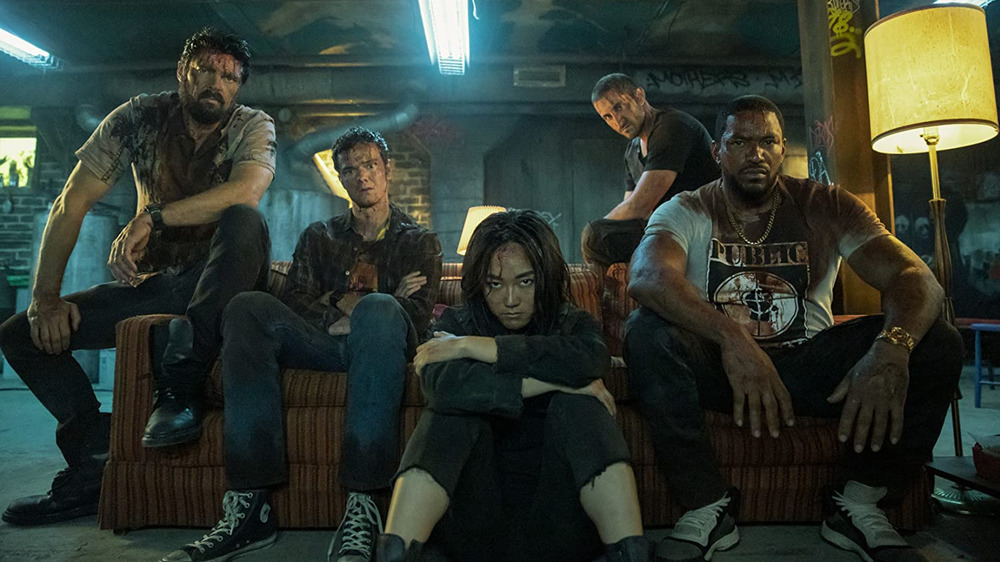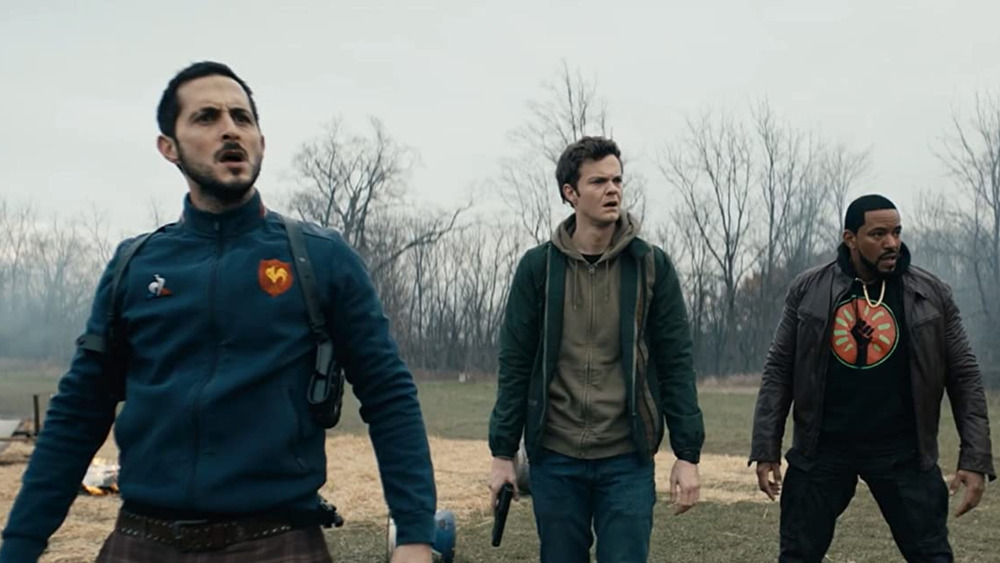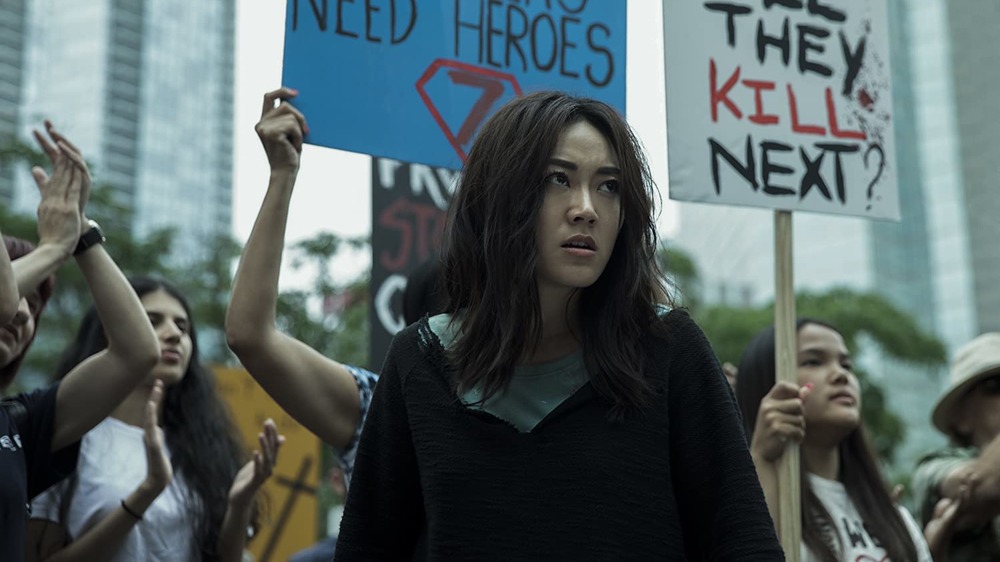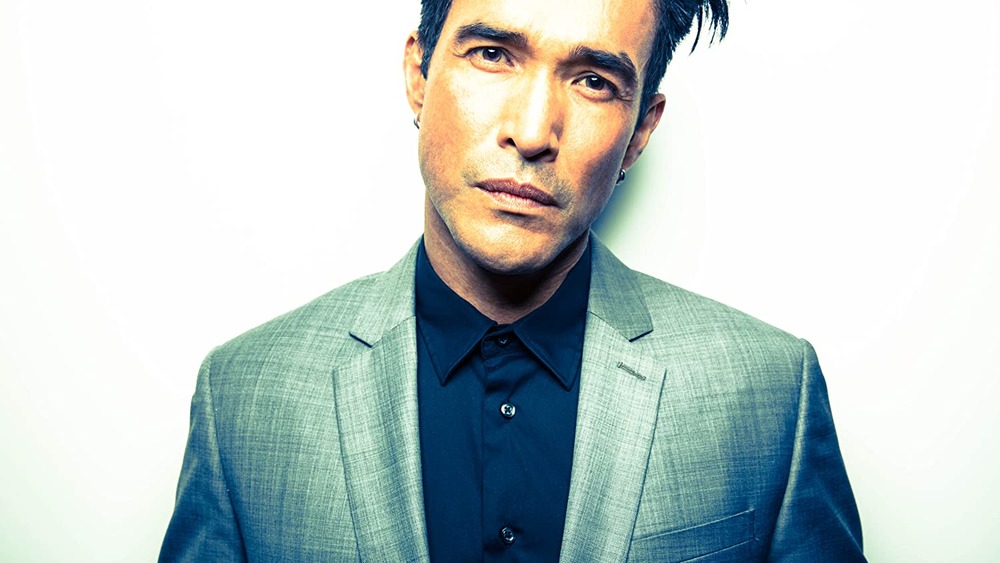Stunt Coordinator Tig Fong Talks The Boys To Life And More - Exclusive Interview
The Boys is a massive show, and one that manages to look and feel massive despite being surrounded by superhero stories with even bigger screens and bigger budgets. That sense of epic scale and comic book scope is thanks to a lot of things, from the writing to the production design to the strength of the show's ensemble cast. It's also thanks to the stunt department, a crew of dedicated people working hard to make sure every punch — whether it comes from a Supe or a human — lands in a convincing way, and every big jump or crash looks like the real thing.
For two seasons Tig Fong has been the man making sure all those crazy action sequences on The Boys work, as a stunt coordinator on season 1 and as Supervising Stunt Coordinator on season 2. So what goes into crafting a wild action set piece for The Boys? Which cast members are most likely to hook up to wire rigs and leap into action? We talked to Fong about all that and more, including his focus on inclusivity in stunt work and returning to sets during a pandemic, in an exclusive interview.
The balance of action and story
I wanted to start with is just kind of a baseline discussion of what your process is when you get a script for The Boys, from the moment you start to look at that script and see what you're going to have to do, to when you get on set and actually have to execute the stunt work.
I'm going to start my answer with something that probably sounds overly obvious, but the first step would be to read the entire script. Now, that probably sounds, like I said, obvious, except that stunt coordinators, like every other head of department in film, they're very, very busy. It's tempting, and I know that a lot of people do it, to just simply to skim the script, to look for the action descriptors and go, "Okay, well, I have to build A, B, and C," and then get to work on constructing those things.
I think what happens is that this is one of the reasons why action is often thematically divorced from plot and story. It's one of the criticisms, if you will, of action-driven shows. And it's really just, there's a plot that is created as an excuse for the action, and then the action happens. So what's very important to me is the story first. And for that reason, I'll want to read the entire script front to back. I'll often give it a second read if I do have the time, and only then do I go back to the actual sequences, which I've annotated at this point, and really then think about how I want to approach those while still carrying the through-line emotion, perhaps if you will, or theme of the story.
Once I've determined the direction of the visual storytelling, then I start going through the usual steps of visualizing the action, creating breakdowns, budgets, et cetera, and then marshalling the resources required to execute the action sequences such as booking stunt performers, stunt riggers and (my favorite!) shooting pre-vis.
Well, speaking of that, not just in terms of action, but the theme of the story, what did season two of The Boys offer in terms of challenges for you that season one didn't have?
I would say the main difference really was really the mandate, if you will, that came down from above, which was to say, "Hey, let's make season two bigger and better. Let's make it twice as big." And I think that might've actually been a metric that was thrown out there. Let's make it twice as big. We were given more days to shoot the episode, a couple more days per episode to shoot, but it wasn't a couple more days of stunts. It was a couple more days in general, to shoot the entire episode.
And then the other issue is that we didn't necessarily have double the budget to do it with. So I really feel the challenges were, "Let's live up to [this], let's do what they're asking, let's absolutely pull out all the stops and let's let our imaginations run wild and let's build big feature film-level stunts and action sequences." However, we still didn't have a feature film budget, nor did we have feature film timeline. Yeah, I think that was the biggest difference in the challenges for season two.
One of the things that's interesting about a show like this is that you have human characters who have to execute stunts as human characters with normal human strength and agility. And then you have superpowered characters who are human actors and human stunt performers who still have to look superhuman, and you have to make it all look real at once. What's the most challenging part of that for you? How do you make that all blend together into one real experience?
Yeah, that is actually the key right there, what you just said in terms of blending these things together. So if you think about it, the challenges are similar in many ways, especially if these two sides, these two different characters are interacting.
So on one side you have superpowered humans who fly extensively, and destroy things, and so on. So there's wire work involved, there's interactive props that have to illustrate their strength if you will. But then if you call that the action, then the non-superpowered humans, they would be the reaction. So if I'm superpowered and I fly down and land, so therefore there's a wired gag involving flying somebody down, landing perhaps in front of a regular human, and then they use powers or they physically grab onto that human and they throw them or they hit them, and that human goes flying, well, then that is the reaction. And that human is also on wires, but usually it has to be accelerated at much higher speeds in fact, than the impetus, than the super-powered human.
Really, the challenges are the same on both sides. You're creating action and reaction and you have to create it in a way that is visually believable.
Going twice as big with season 2
Let's talk about The Boys cast a little bit. Who is the most game for actual stunt work, and who is most likely to pass it off to a stunt performer?
[Laughs] Now you're asking me to play favorites. Definitely [in terms of] who's the most game, it's going to be Karen Fukuhara. She is absolutely amazing. She really is very invested in the Female and her physicality, and is basically just up for anything. I mean, we had her doing wire things in season two and jumping down from high platforms and so on, and she did it with such alacrity, it was only after the fact that she's like, "Well, I've actually never done anything like this before. I've actually never jumped down into a box rig." I would never have guessed because she really didn't seem to hesitate to do any of these things. So certainly, Karen.
Then in terms of who is most able, well, [Karen is] an obvious person to look at, but there are people that we don't get to see as much of what they can do. If you could go back to season one, I know we're talking about season two, but Chace Crawford (the Deep) does a fight scene and a high-dive out on a shipping yard. And that was a practical rig. He was on wires. He had to learn how to balance himself on wires and perform a very clean line swan dive off of a stage that we had in front of a blue screen. We don't always get to see what all of our actors can do, simply because they may not be asked to do that much in terms of their physicality, because their superpower may be something energetic, for instance.
Also, I'd be remiss in not mentioning Karl [Urban, who plays Butcher]. While Karl also has a stunt double for things like hard impacts, he did almost all of his own action on both seasons.
This season, like you said, you went twice as big. The easiest comparison, I think, is season one, you had a dolphin, season two, you had a whale.
[Laughs] That's a great comparison. Yes.
Do any of the big set piece moments stand out to you as the trickiest to pull off?
I would say, for episode three, actually, the whale episode, as I think almost everybody refers to it as. We have the Kenji (stunt performer Chris Mark) character jumping off the rooftop, being pursued by Stormfront, he and Kimiko (stunt performer Irma Leong). That was a practical jump. It's a little bit unfortunate that when we saw the final footage of it, they cut it in such a way that it might've been possible for us to cheat it. But that was definitely a stuntman, a very talented stunt double, actually, and our very, very talented world-class rigging team created that wire jump, which was a 60-foot gap from a six-story building to a three-story building. That required implementation of very large, heavy cranes to get the kind of height you needed to span that gap. It was three days of setup and rehearsal to have that all ready to go. And of course, there's certain risk involved in it. So that would definitely have been the most challenging single gag to set up for a season two.
You mentioned bringing all this together in terms of not just the action, but in terms of theme and character and making it all work as part of one story. And that whole sequence [in the season finale] with Stormfront, from the time that they go and get Ryan, to the time that she's laying on the ground at the end, is just this fantastic, slow breakdown of her, to kind of reveal the monster that she is. The whole fight with Kimiko and Maeve and Annie all coming together, and the big explosions, I wanted to ask just from your perspective, how that all came together?
There's a lot of elements that went into that. I mean, first and foremost, I'm just going to say really excellent writing on the show. Going back to my first answer, which is my process of reading the script from front to back, it's not hard for me to do that because every episode I'm always pulled into the story. And when I read the finale and just seeing exactly this journey that Stormfront goes through, you couldn't wait to just turn to the next page to see what it was going to say.
In terms of executing that, what it requires then, of course, is this dance between multiple departments. You've got her flying around, of course, which when she does her slow descents and takeoffs, for instance, that's all wire work, that's on high-speed winches and so on, that's us. When you see her rocket across the sky and land down in a fast impact, that's of course VFX. When you see the interaction between her and other Supes, or humans, that of course, could be wire work, that could be VFX.
So it's a lot of meetings. It's a lot of discussions between "where does the practical effects of wire work and stunt work leave off, and where does VFX begin? How can props and special effects assist in this?" It's definitely an intricate dance between these departments to create what you see is the end result, which again, I'll say, is all driven by the writing and by the story. As long as that's strong, it's just for the rest of us to do our jobs and bring it to visual reality.
Better representation in the stunt community
Representation is a big going concern for you in the stunt community, and that's obviously a big discussion throughout Hollywood. How do you feel now about how representation is looking in the stunt community? Is it trending in the way you want?
I think [when it comes to] the issues of representation and how the film industry is maybe in the leading edge of that, or they're certainly trying to be now, one can be critical and say, "Well, it still took them too long." But we are seeing that now. And we're seeing that in terms of stipulations required for even winning the Academy Award or being allowed to be nominated and so on, in terms of is there adequate representation within these projects? I think that's all very positive.
Certainly the writing that you'll see when you watch, just flip through TV programs and whatever, you're going to see greater representation of people of color, and queer people, and trans people, and so on. I think that stunts is a little bit lagging behind that. Stunts has its own culture within the culture of film and television. It's a culture of machismo. It's a culture that therefore is going to be affected by standard toxic masculinity and things like that. And I think you're going to find that the turnaround is going to be very slow
It's beginning to show now. Let me put it this way, for years I've wanted things to change in stunts in terms of representation, and then it was only a couple of years ago that I basically woke up one day and went, "Oh, wait a minute. I am the change that I wanted to see. I'm a queer male person of color, that's neurodivergent even, working as a stunt coordinator." And I had never seen that in my formative years as a stunt performer. Clearly, that has happened. And then I think then that it is therefore my responsibility to carry on with that and to amplify that. And I do that of course, by my hiring practices and mentorship of basically a newer and diverse base, so bringing people in who are people of color, bringing in people who are queer and trans and representative of the LGBTQ community, and even [performers with] different abilities.
A lot of shows are getting back up and running, or trying to, in this uncharted territory. How are you feeling just going back out in the pandemic era and trying to make stuff?
It's a challenge that we all have to face and that we are pulling together to face. It's looking promising. You can tell, I hear from different productions, slightly differing protocols that they're using. Time will tell as to which ones work the best. I'm going to say one of the most positive things to come out of this challenge, however, is at least the temporary and I hope maybe beyond temporary measure, of limiting our shooting hours to 10 hours a day. They're doing this because they don't want the crew to become exhausted, both in relation to being too tired to start ignoring COVID protocols, that's one, and then the physical reality of constant sleep deprivation or being exhausted. Coming off of night shoots, that's hard on you and that is proven and shown to suppress immune systems. And that's not the thing that you want to have happening right now.
Many productions have gone to a policy of a 10-hour day and French hours for lunch. I love it. I think it's fantastic. I think you have a healthier crew. You have greater output and you have, I think, greater creativity because who the hell is creative after a full 10-hour day when you're standing on set and it's a split shoot? So I hope that this carries on even after this passes, even after we have a vaccine. It reflects a better work-life balance in the film industry, which is something that is dearly needed.



